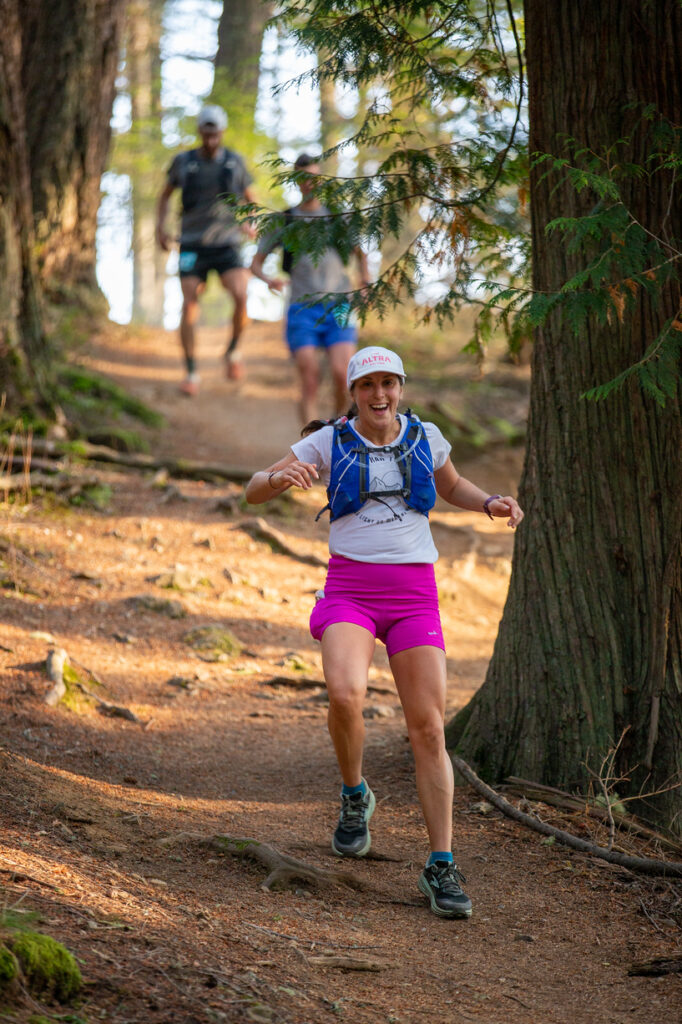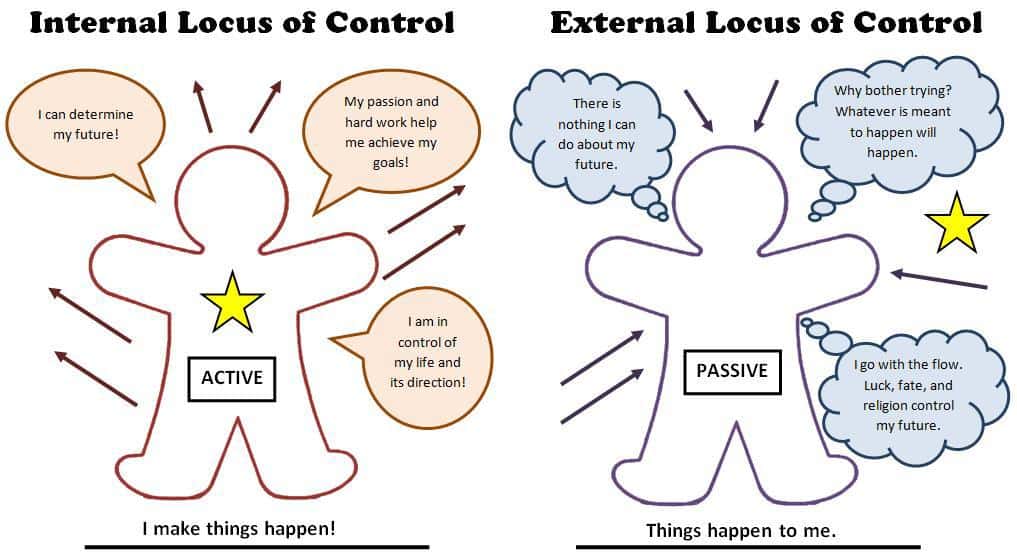When I get to an event, I won’t cross the tape until the race begins. You may be wondering why, and honestly I too wonder. The only thing I do know about this funny superstition is that at one of my very first races, I was running across the finish line to go pee before the start when another runner stopped me and said, “no one runs under the finish line before they start…if you do, you won’t finish the race!” I took this advice as an absolute truth and have since feared crossing the finish line until the end of the race.
This seemingly harmless superstition began to really challenge me when I realized that some races require you to run through the finish line to start. You see, at many trail races the start and finish are the same place. The first race I encountered this, I literally stood stumped at the start line thinking how I could get around cursing myself. There was no way around except through. I ran over the finish line in a crowd of other runners… but I spent the first hour fixated on how this was negatively going to impact me. Of course, I finished and even had a great race! However, I wasted an hour of my vital energy fixating on what could go wrong based on another runner’s superstition from 15 years prior.
How often do you give up your power to a seemingly meaningless object or ritual? In the moment, it feels incredibly important, completely necessary and even potentially helpful. How often have you let an act or an object dictate the outcome of a race? I know that many of my athletes have, I know I have. Sometimes they attribute a positive outcome to their perfect pre-race routine or get super worried when things go awry. Did you lose your favorite shirt the night before your big race? Couldn’t poop the morning of? These problems and the subsequent destructive thinking plagues many runners – especially before big efforts!
As a coach and an ultrarunner myself, I want to share a secret I have observed… no specific shirt, routine, pair of socks, bracelet, or hairstyle will change the outcome of your day – unless you let it. Our society, and runners in particular, are a superstitious bunch. We are quick to create a routine and if we have experienced success with said routine, we can create a narrative around these rituals. Instead of crediting ourselves with success, we credit the routine or object that apparently brought about good luck. That shirt you wore during your best workout, it must have been powerful because the next time you wore that same shirt, you slayed the workout again! But, is it the shirt or was it your mindset and the consistency of your training?
So much of our lives are unpredictable, we crave structure, power and the ability to control what happens next. However, in our thirst for control, we don’t realize that these connections are manufactured. Researchers have observed that almost a quarter of athletes report being superstitious and up to 60% of respondents in a Vanity Fair article use superstitious phrases to “combat” the possibility of bad things happening. The concept these studies capture is coined ‘magical thinking’. Magical thinking is a coping skill to help manage anxiety and can be incredibly useful.

Many skills people rely on are adaptive and helpful in nature. From the beginning of our schooling, therapists are trained not to dismantle adaptive skills that help our clients thrive. When a skill is helpful at face value, we don’t often notice the downside. Creating a routine, or a lucky outfit to wear before racing helps regulate and calm nerves. However, as we all have learned lately, life is incredibly unpredictable and relying on a specific object, a good poop, or the weather, to do our best can sabotage our ability to perform when something goes wrong. Our favorite shorts get a rip, we lose a pair of socks, our favorite bracelet falls off and then what happens? We can quickly fall apart and forget about our internal power.
During coaching, a concept I teach my athletes is about the idea of external versus internal loci of control. When a person has an external locus of control, they believe they are not in control of their lives. They give up their power to objects and these individuals often believe success and failure is correlated with luck or circumstances outside of their control. An internal locus of control means believing you are in control of your destiny. Rather than believing outcomes are determined by a magical, external force, the internal locus of control focuses on how an individual’s behavior influences outcomes. When individuals embrace an internal locus of control, they are able to adapt when something happens outside of their plan. If they have a bad race, they accept responsibility and discuss how they can grow and move forward. If an individual has a strong race, they credit their hard work, dedication and strength. Someone identifying with external locus of control would contribute a winning race to luck or someone stronger not showing up.
Athletes with a strong internal locus of control are able to use mindset to overcome external circumstances that do not go as expected. Rather than seeing rain as a sign of doom, they rely on their own internal strength and self-talk to overcome adversity. Running is a practice of facing adversity, when we take control for how we respond to external circumstances, we thrive as athletes. Not necessarily because we have the best race of our lives, but because we rise to the challenges that we face. Challenges become a point of strength and triumph, rather than an excuse to give up or stop trying.

Recently, an athlete of mine had a huge race. It was her longest distance, at high altitude with all sorts of challenges – lots of climbing, time alone in the dark, wild animals on the trail, temperature extremes and lots of exposure. The morning of the race, she couldn’t poop! It sounds silly, but she was hyper focused on how that was going to ruin her race. Having coached many athletes, and familiar with the prerace panic, I reminded her that sometimes you poop beforehand and sometimes you poop during. Shit happens. You meet the challenges, no matter how messy, with a confidence stemming from your mindset. When you believe in yourself, in your own power and strength, no single challenge or waylaid routine stands in your way.
The good news is that you get to choose where your power lies. Think back to a previous positive outcome, whether it is a workout or a race, and see if you take credit for the result. Your strength, power, and hard work is not a circumstance outside of your control. It is because you are working at it, because you show up each run, each day to embrace the challenges of being an athlete. Every time we depend on outside sources, we release our power. You are capable at the start line, because you worked to get there, not because of your special shoes. I’m not saying to give up your pre-race routine, your favorite race shirt or the rituals that help you feel good, I am asking you to consider how incredibly powerful you are even when the plan goes to hell. You are not powerful because of a belief in an external object, you are powerful because of an internal mindset that helps you thrive in adversity. You can create a routine before a race because it is self-soothing. But, if and when something messes it up, focus on your breath, and ground yourself in your belief in your own power. The goal is not to rely on superstitions but use them to feel supported. All socks are lucky, if you believe in them!
